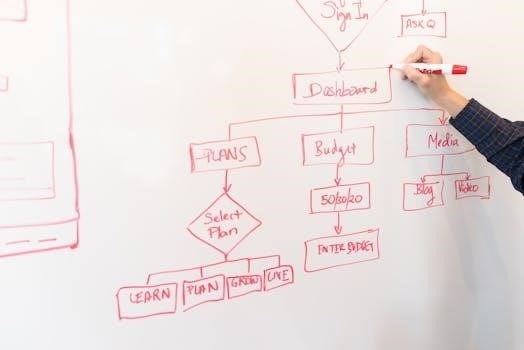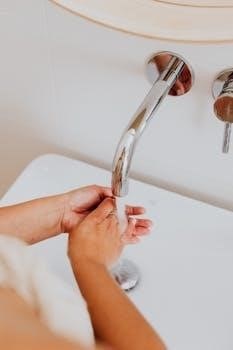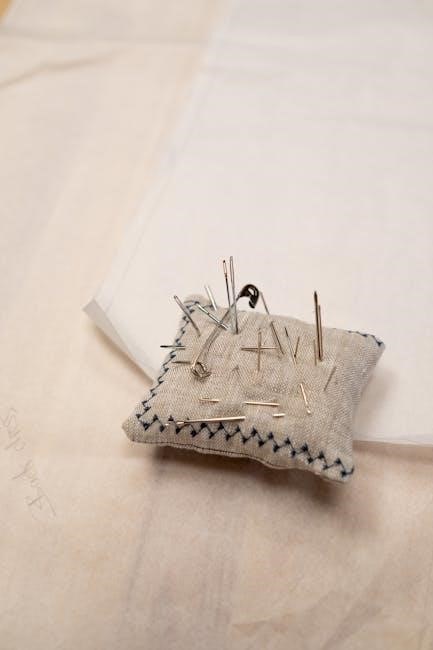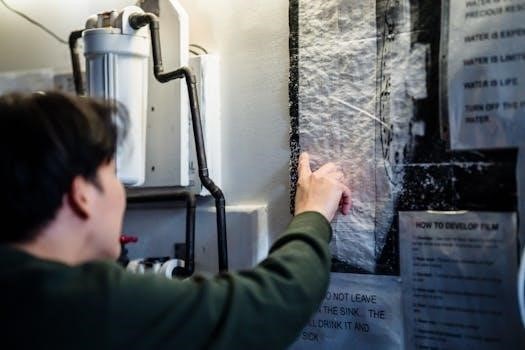
water softener instruction manual
Water softener instruction manuals are essential for understanding the functions and maintenance of your system. These manuals offer guidance on installation, operation, and troubleshooting to ensure optimal performance and longevity. Manuals are available online.
Importance of Understanding Your Water Softener Manual
Understanding your water softener manual is crucial for effective operation and maintenance. The manual provides detailed instructions on setting up the system, including connecting water lines and drain hoses, to ensure proper installation and prevent leaks. It also explains control valve settings.
The manual guides you through setting the regeneration cycle, which is essential for maintaining the softener’s efficiency. Monitoring and refilling salt levels, as well as understanding when and why to manually regenerate the system, are also critical aspects covered in the manual. These procedures can be found online.
Furthermore, the manual includes troubleshooting tips for common issues and provides diagnostic procedures to help resolve problems quickly. Regular maintenance tasks and cleaning instructions are outlined to keep your water softener in optimal condition, extending its lifespan and ensuring consistent performance.
Installation Instructions
Proper installation is vital for a water softener’s performance; This section provides a pre-installation checklist, location requirements, and step-by-step guidance for connecting water lines and drain hoses. Initial startup and system flushing are also detailed.
Pre-Installation Checklist and Location Requirements
Before installing your water softener, review this checklist. Confirm you have all necessary components⁚ the resin tank, brine tank, control valve, and connection fittings. Gather tools like pipe cutters, wrenches, and thread seal tape. Ensure the installation location meets specific requirements.
The area should be level, dry, and protected from freezing temperatures. Access to a drain and electrical outlet is essential. Check local plumbing codes and regulations. The location must allow sufficient space for maintenance and salt refilling. Avoid direct sunlight to prevent damage.
Consider proximity to the main water line for efficient connection. Ensure adequate water pressure is available, as specified in the manual. A solid, stable base is necessary to support the softener’s weight. Proper planning prevents installation issues and ensures optimal operation;
Connecting Water Lines and Drain Hose
Begin by shutting off the main water supply to prevent leaks during installation. Connect the inlet and outlet water lines to the control valve, using thread seal tape to ensure a watertight seal. Securely tighten all fittings with wrenches, avoiding over-tightening to prevent damage.
Attach the drain hose to the designated port on the control valve, directing it to a suitable drain location, like a floor drain or utility sink. Ensure the drain hose has an air gap to prevent back-siphoning. Secure the hose with clamps to prevent disconnections and leaks.
Follow the manual’s instructions for specific connection requirements. Double-check all connections for tightness and stability before restoring the water supply. Gradually turn the water on to check for leaks and ensure proper flow. This careful connection process guarantees efficient operation and prevents water damage.
Initial Startup and System Flush
After connecting water lines, initiate the startup by slowly opening the main water valve. This prevents pressure shock. Check for leaks at all connections, tightening fittings if necessary. Next, initiate a manual regeneration cycle to flush the system, removing manufacturing residue and air.
Refer to your water softener manual for specific steps. Typically, this involves pressing and holding a button or turning a valve to start the regeneration. Allow the system to run through the entire cycle. Monitor the drain hose for any unusual discoloration or sediment, which indicates the system is flushing properly.
Once the cycle is complete, check the water hardness using a test kit to ensure the softener is functioning. Adjust settings as needed. Repeat the manual regeneration if hardness levels remain high. This initial flush is critical for optimal performance and clean, soft water from day one.

Operating Instructions
Understanding your water softener‘s operation is crucial for maintaining soft water. This section covers control valve settings, regeneration cycles, and salt level management, all detailed in your instruction manual for optimal performance.
Understanding the Control Valve Settings
The control valve is the brain of your water softener, and understanding its settings is critical for efficient operation. Your instruction manual provides detailed explanations of each setting, including those for regeneration frequency, backwash duration, and salt dosage. Correctly configuring these settings ensures optimal water softening while minimizing salt usage and water waste.
Refer to your manual for specific instructions on navigating the control panel and adjusting settings according to your water hardness and usage patterns. The manual will help you understand the different modes, such as “metered” or “timed” regeneration, and how to select the appropriate mode for your needs.
Pay close attention to the manual‘s guidance on setting the correct time of day and regeneration time to avoid disruptions. A properly configured control valve is essential for maintaining a consistent supply of soft water and extending the lifespan of your softener.
Setting the Regeneration Cycle
The regeneration cycle is crucial for restoring the water softener‘s resin beads, which remove hardness minerals from your water. Your instruction manual will guide you through the process of setting the regeneration frequency and duration. This frequency depends on water hardness and usage, as detailed in your manual.
Most modern softeners offer automatic regeneration, which can be set based on water consumption or a timer. Consult your manual to determine the best approach for your system. The manual will also explain how to adjust the salt dosage for each regeneration cycle, ensuring efficient use of salt and optimal softening.
Understanding the different stages of the regeneration cycle, such as backwash, brine draw, and rinse, is essential. The manual provides detailed explanations of each stage, helping you monitor the system’s performance and troubleshoot any issues. Proper regeneration ensures a continuous supply of soft water.
Salt Level Monitoring and Refilling
Maintaining the correct salt level in your water softener‘s brine tank is vital for effective regeneration. Your instruction manual will specify the recommended salt level for your model. Regularly check the brine tank to ensure the salt level is adequate for proper operation, as per the manual‘s instructions.
The manual will also advise on the type of salt to use, such as rock salt, solar salt, or evaporated salt pellets. Using the correct type of salt, as recommended in the manual, prevents clogs and ensures optimal performance. Refilling the brine tank involves adding salt until it reaches the recommended level, typically a few inches below the top of the tank.
Avoid overfilling the brine tank, as this can lead to salt bridging or clumping, which can impede the regeneration process. Your manual may also provide tips on breaking up salt bridges and cleaning the brine tank to maintain its efficiency. Consistent monitoring and refilling are essential.

Manual Regeneration
Manual regeneration may be required when the system fails to automatically regenerate or after periods of high water usage. The instruction manual provides the steps for initiating this process.
When and Why to Manually Regenerate
Manual regeneration of a water softener becomes necessary in specific situations, primarily when the automatic regeneration cycle fails or when there is an unexpected surge in water usage. The system is usually programmed to regenerate automatically based on time or water usage, but sometimes, due to power outages or mechanical issues, it might not occur as scheduled.
In these instances, manually initiating the regeneration cycle ensures that the resin beads are cleaned and recharged, maintaining the softener’s efficiency. Another common scenario is after a period of unusually high water consumption, such as when hosting guests or filling a swimming pool. This can deplete the resin’s capacity faster than anticipated.
Regular manual regeneration can also help prolong the life of the resin beads. It is also required when the resin tank needs located close to a drain to prevent air breaks and back flow.
Step-by-Step Manual Regeneration Procedure
To manually regenerate your water softener, begin by locating the manual regeneration knob on the control valve. This knob is typically labeled and easy to identify. Before proceeding, ensure the water supply to the softener is turned on. Now, gently push the knob and turn it clockwise.
This action engages the program wheel and initiates the regeneration cycle. The softener will then cycle through its various stages, including backwash, brine draw, slow rinse, and rapid rinse. Allow the system to complete all these stages without interruption. The entire process usually takes about two hours.
During the brine draw stage, the softener pulls salt water from the brine tank to recharge the resin beads. After the regeneration cycle is complete, the softener will automatically return to its service mode. You may need to manually reset the timer if your system requires it. This process ensures the softener effectively removes hardness minerals from your water supply.

Troubleshooting
This section provides solutions for common water softener issues. Diagnostic procedures are outlined to help identify problems. Consult this section before seeking professional assistance to potentially resolve issues efficiently.
Common Issues and Solutions
Addressing common problems promptly can extend your water softener’s lifespan. Salt bridging occurs when salt forms a hard crust, preventing proper brine creation; break it up manually. Insufficient soft water might indicate resin bed issues or incorrect settings, which should be checked against the manual.
A malfunctioning control valve can disrupt regeneration; inspect and clean it. Excessive water usage or discharge may signal leaks or valve problems. Unusual noises during regeneration suggest mechanical issues needing professional attention. Always consult your water softener manual for specific troubleshooting steps.
Hardness in water can also be due to regeneration settings. If none of these fix your problems, a water professional can help.
Refer to your manual for specific model instructions. Manual regeneration may also be required.
Diagnostic Procedures
When your water softener malfunctions, systematic diagnostic procedures are essential. First, verify the power supply and check for any error codes displayed on the control panel, referencing your manual for code definitions. Test the water hardness before and after the softener to confirm its effectiveness.
Inspect the brine tank for proper salt levels and any bridging or clogs. Manually initiate a regeneration cycle to observe the system’s operation, listening for unusual noises or blockages. Check the drain line for proper flow during regeneration, ensuring no obstructions. Examine the control valve for leaks or damage.
If problems persist, isolate components for individual testing, such as the motor or sensors. Consult the water softener manual for detailed diagnostic charts and procedures. Professional assistance may be necessary for complex issues.
These steps will help you locate the root cause of the issue. Proper diagnosis is the first step in resolving softener problems.

Maintenance
Regular maintenance is crucial for prolonging the life of your water softener. Tasks include salt level checks, cleaning, and disinfection. Following these procedures ensures optimal performance, preventing costly repairs and maintaining water quality.
Regular Maintenance Tasks
Regular maintenance tasks are crucial for ensuring your water softener operates efficiently and prolongs its lifespan. One of the primary tasks involves routinely checking the salt levels in the brine tank. Keep the tank at least one-quarter full at all times, using the appropriate type of salt recommended by the manufacturer.
Another vital aspect of maintenance is inspecting the softener for any signs of leaks or damage. Address any issues promptly to prevent further complications. Additionally, periodically cleaning the brine tank helps prevent salt bridges or buildup that can hinder the softening process.
Furthermore, monitor the water hardness to confirm the softener is functioning effectively. If you notice an increase in hardness, it may indicate a problem with the system that requires attention. Regular maintenance ensures consistent soft water and prevents potential problems.
Cleaning and Disinfection
Cleaning and disinfection are essential maintenance steps to ensure your water softener provides safe and effective water softening. Over time, bacteria, sediment, and other contaminants can accumulate in the brine tank and resin tank, reducing the softener’s efficiency and potentially affecting water quality.
To clean the brine tank, remove any remaining salt and scrub the interior with a mild detergent and water solution. Rinse thoroughly to remove all soap residue before refilling with fresh salt; For disinfecting the system, you can use a chlorine bleach solution.
Pour the bleach solution into the brine well, following the manufacturer’s instructions for the correct concentration. Then, manually regenerate the softener to distribute the disinfectant throughout the system. After regeneration, flush the system to eliminate any residual chlorine. Regular cleaning and disinfection prevent bacterial growth and maintain optimal performance.


Leave a Reply
You must be logged in to post a comment.